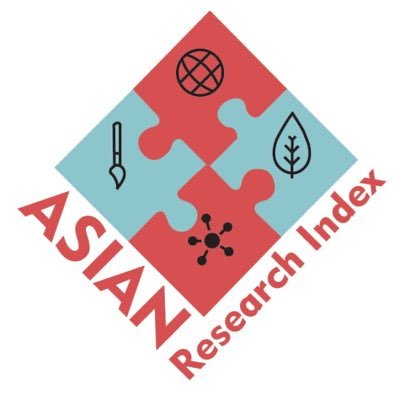Prevalence of Plantar Fasciitis and Its Contributing Factors Among Working Women
DOI:
https://doi.org/10.55735/b0w3d039Keywords:
Heel pain, Plantar fasciitis , Windlass test , Working WomenAbstract
Background: Plantar fasciitis is one of the most common musculoskeletal conditions affecting the foot, primarily presenting as intense heel pain at the site where the plantar fascia inserts into the anterior aspect of the calcaneus. Objective: To assess the prevalence and contributing factors of plantar fasciitis among working women. Methodology: This cross-sectional study was conducted with a sample of 176 working females from Lahore over a duration of six months, following the submission of the study synopsis. Non-probability purposive sampling was used for participant selection. The inclusion criteria consisted of females aged 25 to 50 years, currently working with more than six months of experience, and working at least seven hours a day, while also wearing hard, non-cushioned footwear with no built-in arch support. The exclusion criteria included females with recent foot or lower extremity injuries, neurological conditions (e.g., diabetes, peripheral vascular disease), psychological or mental disorders, or those who did not consent to participate. After gathering the responses through the demographic and structured questionnaire, we analysed the data using SPSS version 26. The data analysis was carried out statistically using descriptive statistics; the continuous variables were presented in tables with means and standard deviations, and the ordinal variables were presented in frequency tables. The size of the sample was calculated by Results: Among 176 working women, the mean age of 32.86±3.96 years, the body weight of 65.15±8.14 kg, and the average height of 5.38±0.13 feet. The majority of participants were healthcare workers (46.6%), followed by office workers (22.7%). Average daily standing and walking durations were 5.96±1.91 hours and 4.66±1.52 hours, respectively. Only 33.5% exercised regularly. Chi-square analyses showed significant associations between plantar fasciitis and various factors such as age, body weight, occupation, standing duration, walking duration, exercise habits, and footwear type. Conclusion: The study identified a plantar fasciitis prevalence of 18.8% among working women, assessed via the Windlass test. Statistically significant associations were observed with age, body weight, occupation, prolonged standing and walking, lack of exercise, and footwear type (p<0.05).
Downloads
References
1. Tahririan MA, Motififard M, Tahmasebi MN, Siavashi B. Plantar fasciitis. Journal of Research in Medical Sciences 2012; 17(8): 799–804.
2. Rhim HC, Kwon J, Park J, Borg-Stein J, Tenforde AS. A Systematic Review of Systematic Reviews on the Epidemiology, Evaluation, and Treatment of Plantar Fasciitis. Life (Basel) 2021; 11(12). DOI: 10.3390/life11121287 DOI: https://doi.org/10.3390/life11121287
3. Buchanan BK, Kushner D. Plantar fasciitis. 2017. Bookshelf ID: NBK431073
4. Arnold MJ, Moody AL. Common Running Injuries: Evaluation and Management. American Family Physician 2018; 97(8): 510–6.
5. Trojian T, Tucker AK. Plantar fasciitis. American family physician 2019; 99(12): 744–50.
6. Mørk M, Soberg HL, Hoksrud AF, Heide M, Groven KS. The struggle to stay physically active—A qualitative study exploring experiences of individuals with persistent plantar fasciopathy. Journal of Foot and Ankle Research 2023; 16(1): 20. DOI: 10.1186/s13047-023-00620-4 DOI: https://doi.org/10.1186/s13047-023-00620-4
7. Petraglia F, Ramazzina I, Costantino C. Plantar fasciitis in athletes: diagnostic and treatment strategies. A systematic review. Muscles Ligaments Tendons Journal 2017; 7(1): 107–18. DOI: 10.11138/mltj/2017.7.1.107 DOI: https://doi.org/10.11138/mltj/2017.7.1.107
8. El-Shafei MA, Yousef AM, Hamada HA, et al. Effect of Low Versus High-Heeled Footwear on Spinopelvic Alignment at Different Phases of Menstrual Cycle in Young Adult Women: A Biopsychosocial Perspective. Frontiers in Psychology 2021; 12: 792446. DOI: 10.3389/fpsyg.2021.792446 DOI: https://doi.org/10.3389/fpsyg.2021.792446
9. Palomo-López P, Becerro-de-Bengoa-Vallejo R, Losa-Iglesias ME, Rodríguez-Sanz D, Calvo-Lobo C, López-López D. Impact of plantar fasciitis on the quality of life of male and female patients according to the Foot Health Status Questionnaire. Journal of Pain Research 2018; 11: 875–80. DOI: 10.2147/JPR.S159918 DOI: https://doi.org/10.2147/JPR.S159918
10. Ul Abidin SZ, Haneef K, Malik NR, et al. Prevalence and associated risk factors for plantar fasciitis among security forces personnel in Peshawar. Annals of Allied Health Sciences 2019; 5(2): 20–3.
11. Aiman U, Malik L, Zahoor A. Pain and difficulty level in working females having plantar fasciitis of Multan city: Pain & Difficulty in Working females with Plantar Fasciitis. Pakistan BioMedical Journal 2022; 5(8): 46–50. DOI: 10.54393/pbmj.v5i8.195 DOI: https://doi.org/10.54393/pbmj.v5i8.195
12. Idrees M, Ahmad A, Gilani SA. Frequency of Plantar Fasciitis Among Traffic Wardens of Lahore. 2019; 35.
13. Alshami AM, Babri AS, Souvlis T, Coppieters MW. Biomechanical evaluation of two clinical tests for plantar heel pain: the dorsiflexion-eversion test for tarsal tunnel syndrome and the windlass test for plantar fasciitis. Foot & Ankle International 2007; 28(4): 499–505. DOI: 10.3113/FAI.2007.0499 DOI: https://doi.org/10.3113/FAI.2007.0499
14. Farooq N, Aslam S, Bashir N, Awan WA, Shah M, Irshad A. Effectiveness of transverse friction massage of Flexor digitorum brevis and Calf muscle stretching in Plantar fasciitis on foot function index scale: A randomised control trial. Isra Medical Journal 2019; 11(4): 305–9.
15. Vynohradov VE, Pastukhova VA, Lukyantseva HV, Buka GY, Fedoniuk LY, Chervatiuk AM. Maintaining competitive activity in elite sports with acute plantar fasciitis. Polski Merkuriusz Lekarski 2023: 288. DOI: 10.36740/Merkur202303118 DOI: https://doi.org/10.36740/Merkur202303118
16. Siriphorn A, Eksakulkla S. Calf stretching and plantar fascia-specific stretching for plantar fasciitis: A systematic review and meta-analysis. Journal of Bodywork and Movement Therapies 2020; 24(4): 222–32. DOI: 10.1016/j.jbmt.2020.06.013 DOI: https://doi.org/10.1016/j.jbmt.2020.06.013
17. Yelverton C, Rama S, Zipfel B. Manual therapy interventions in the treatment of plantar fasciitis: A comparison of three approaches. Health SA Gesondheid 2019; 24. DOI: 10.4102/hsag.v24i0.1244 DOI: https://doi.org/10.4102/hsag.v24i0.1244
18. McKivigan J, Tulimero G. An Analysis of Graston Technique® for Soft-Tissue Therapy. Rehabilitation Science 2020; 5: 31–7. DOI: https://doi.org/10.11648/j.rs.20200504.11
19. Ahmed E, Fouda K. Active Release Technique and Ultrasound Therapy versus Ultrasound Alone in the Management of Plantar Fasciitis. Sylwan 2015; 160: 54–63.
20. Bhoir KS, VV G. Prevalence of Plantar Fasciitis Among Nurses at a Tertiary Care Centre in a Rural Area: A Cross-Sectional Study. International Journal of Physiotherapy Research 2021; 9(4): 3900–06. DOI: 10.16965/ijpr.2021.140 DOI: https://doi.org/10.16965/ijpr.2021.140
21. Nawaz I, Bukhari A, Warda Shafique Q, et al. Factors Associated With Heel Pain in Young Professionals. Pakistan Journal of Medical & Health Sciences 2023; 17(05): 16–. DOI: 10.53350/pjmhs202317516 DOI: https://doi.org/10.53350/pjmhs202317516
22. Tamir Tsehay Y, Lamesgin Endalew H, Dessalegn Bogale A, Walle TA. Prevalence and Associated Factors of Ankle-Foot Pain Among Nurses Working in Surgical Units of Comprehensive Specialised Hospitals in Amhara Regional State, Northwest Ethiopia, 2022. Journal of Pain Research 2023; 16: 2685–96. DOI: 10.2147/JPR.S405417 DOI: https://doi.org/10.2147/JPR.S405417
23. Hashmi R, Naeem L, Arif S, Habiba U, Irfan R, Zafar M. Frequency of plantar fasciitis among females in the teaching profession. Journal of Aziz Fatimah Medical & Dental College 2020; 2(2): 53–7. DOI: 10.55279/jafmdc.v2i2.102 DOI: https://doi.org/10.55279/jafmdc.v2i2.102

Downloads
Published
License
Copyright (c) 2025 The Healer Journal of Physiotherapy and Rehabilitation Sciences

This work is licensed under a Creative Commons Attribution 4.0 International License.














